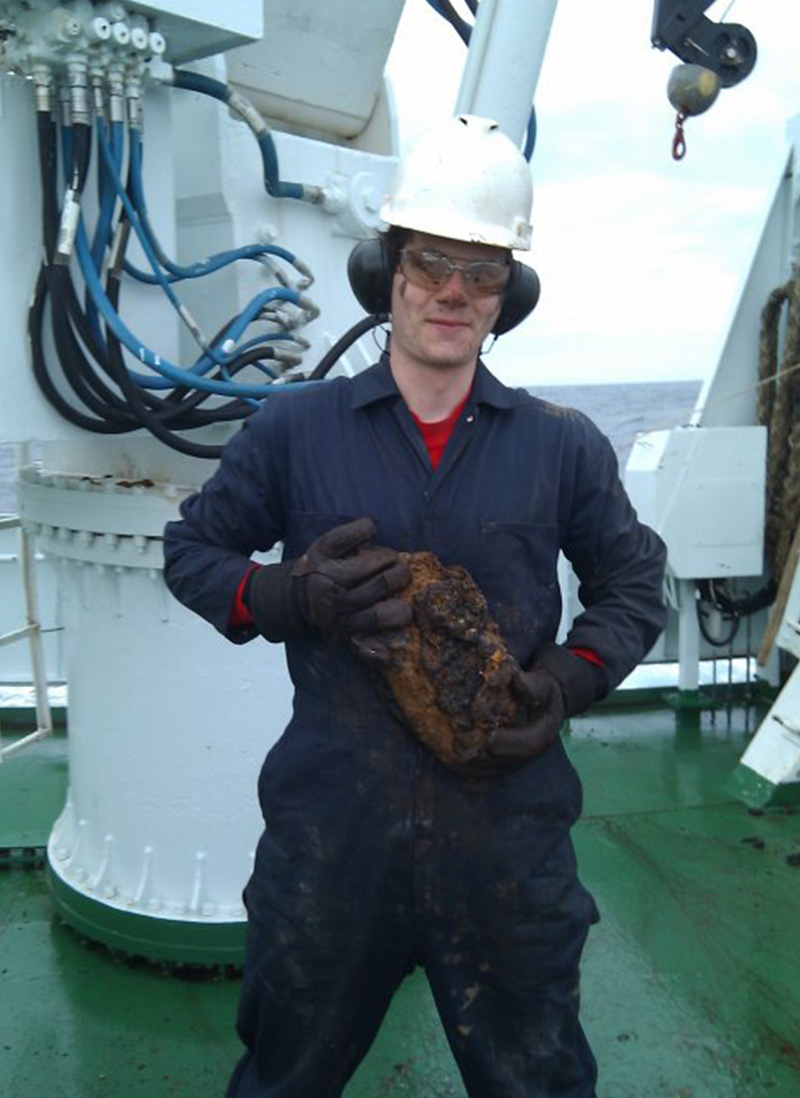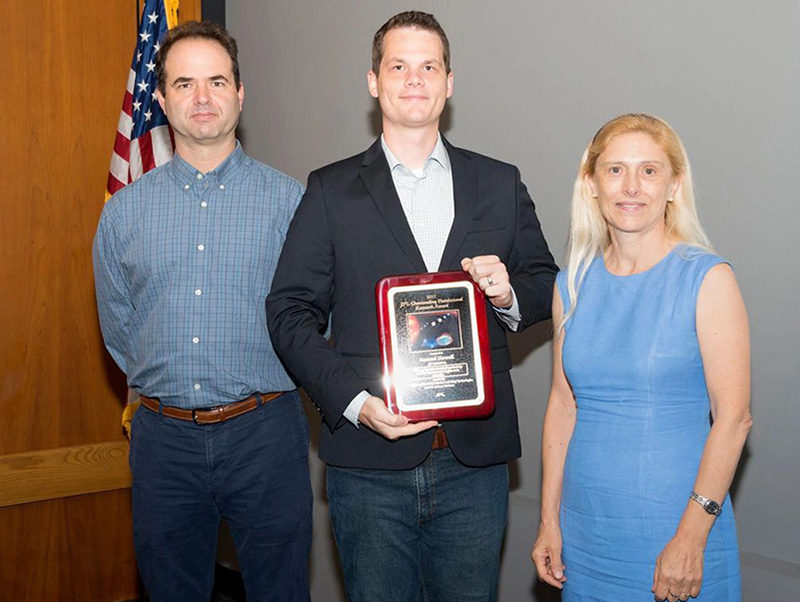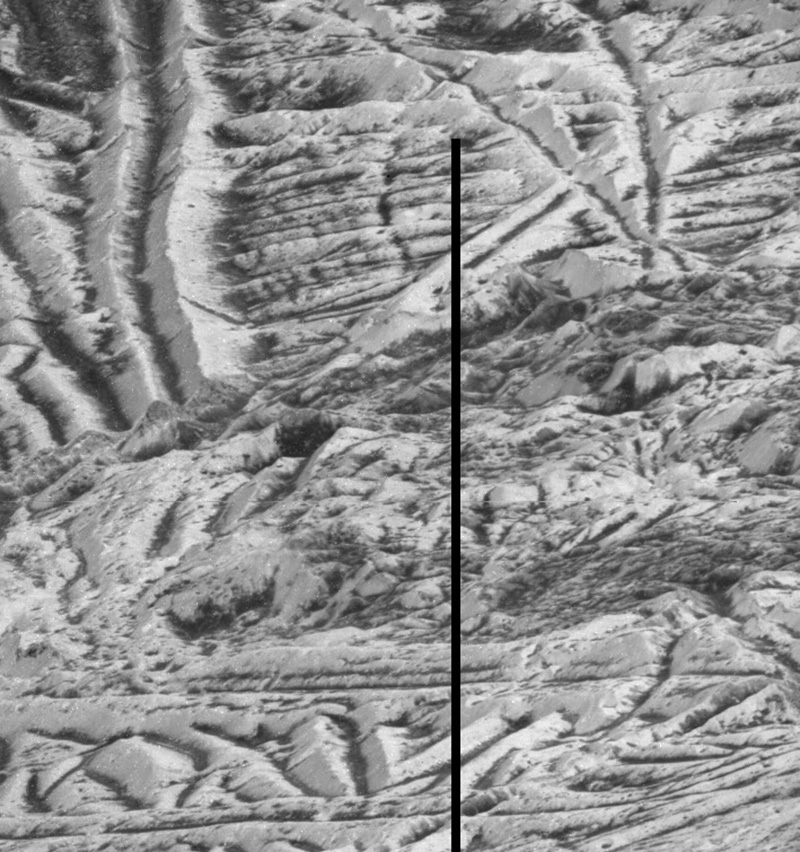
Samuel “Sam” Howell
Project Staff Scientist, Europa Clipper Mission - NASA's Jet Propulsion Laboratory (JPL)
Kettering Fairmont High School | Kettering, Ohio
Rose-Hulman Institute of Technology | Terre Haute, Indiana
B.S. in Engineering Physics
University of Hawaiʻi at Mānoa
M.S., Ph.D. in Geology and Geophysics
I grew up wanting to be an astronaut, an architect, or Indiana Jones. Science classes were always my favorite at school. I grew up in a part of Ohio that boasts a century of aviation history. As a child, one of my favorite places to visit on weekends was the National Museum of the United States Air Force. I remember spending hours looking at the first crewed capsules, the evolution of rockets, and launch vehicles. That has always stuck with me. My favorite memories from my first childhood trip to Washington are of the National Air and Space Museum. I'm thrilled every day to be working on a robotic mission to the outer solar system!
I went to graduate school to study marine geophysics. I was fascinated by Earth's plate tectonics. While completing my master’s, and Ph.D., I visited tectonic plate boundaries to figure out how they worked. While working on those degrees, I saw another graduate student give a presentation on Jupiter’s moon Ganymede – an ocean world that’s larger than Mercury. I soon learned that another moon of Jupiter – Europa – might have icy plate tectonics. I reached out to a scientist at NASA’s Jet Propulsion Laboratory (JPL), who soon became both my postdoc adviser, and the project scientist for NASA’s Europa Clipper mission.
In my postdoc, I found a love for both the science of ocean worlds like Europa, and for their exploration. I began to help coordinate a lecture series for the Europa Clipper team, in which members of the mission team, outside experts, and scholars shared their research and interests. Interacting with this broad and diverse range of fascinating speakers was a hook, and I've not looked back.
I also found a passion for working on new mission concepts, and I look forward to decades of exploring the solar system. I have the coolest job on Earth! (Because of its surface temperature, jobs on Europa are slightly cooler...)
Incidentally, that graduate student who spoke about Ganymede, Marissa Cameron, is now my wife, and we both work on the science and exploration of Europa at JPL!

I am a project staff scientist on NASA’s Europa Clipper mission. I assist the project scientist and his deputies to support the science goal, and objectives of the mission. I work with the leadership of the different science working groups and focus groups. I help to coordinate science activities, like evaluating how our myriad models of Europa fit together.
As an ocean worlds research scientist at JPL, I study how planetary ice shells change through time, move material around, interact with deep planetary oceans, and influence the habitability of ocean worlds.
I also work on concepts for future missions to study worlds like Europa. We hope to someday dive into those oceans and look around!
Find good mentors! The most important thing for me has been to find established mentors who share my interests, goals, and passions. A good mentor can help you find opportunities you might not otherwise have had. Additionally, good mentors can help you build your work and your resume so that you can capture opportunities when they are presented.
One piece of advice I wish I had gotten heading into graduate school: be vocal about what you want to do. In my first year, a fellow student told me about her research on moon volcanoes. I thought that was just the greatest thing, but I never brought up my interest in space to my advisor, who studied Earth. It took me six more years to become an advocate for my own interests. Once you find something you are passionate about, make sure everyone knows it!
I've always been inspired by explorers, and by those who push new boundaries. As an undergraduate engineer, I took a lot of inspiration from Marie Curie. She was propelled forward by her science. She constantly confronted obstacles to do more with less. She built a body of scientific work, and achievements that stand out in an era of great scientists.
As a graduate student in Hawaii, I drew inspiration from the Polynesian culture around me. It’s a welcoming culture that cares about family, the environment, and of course, exploring. I was inspired by friends who sailed on the voyaging canoe Hōkūleʻa, navigating by the stars in an open water vehicle of ancient design. “Moana” is my favorite Disney movie.
Recently, I've been inspired by my peers. I am incredibly fortunate to be surrounded by highly capable, ambitious people. They are great thinkers, and clever problem solvers. I draw inspiration from the Europa Clipper science team. I’m also inspired by early-career scientists, and postdocs making breakthroughs and generating new ideas.
My favorite projects have taken plate tectonics concepts from Earth and applied them to Europa. I have had a really successful collaboration with my postdoc advisor, and with those in my research group. Through this collaboration, I've been able to look into mechanisms that are similar to mid-ocean-ridge spreading and plate subduction on Earth. However, Europa's ice shell keeps behaving in surprising and unintuitive ways. I've really enjoyed following that science.
In addition to the Europa Clipper mission, my absolute favorite projects have been working on potential future mission concepts that would allow us to dive into the ocean on Europa.
Since early in my postdoc, I've participated in multiple projects in NASA's Scientific Exploration Subsurface Access Mechanism for Europa (SESAME) development program. I am the lead scientist for JPL's Probe using Radioisotopes for Icy Moons Exploration (PRIME) technology concept. These projects are studying ways to melt through miles of planetary ice, and debris, to put science instruments into the ocean. I find it a really engaging goal, and I hope to see these concepts implemented in my lifetime.
Of all the adventures I've been on, the most meaningful was to Africa. In grad school, my father and I climbed Mount Kilimanjaro in Tanzania, the tallest mountain in Africa. I'll never forget our experience, our guides, and the feeling of summiting the mountain after days of trekking. Also, I recall cooling down with the incredible food in Moshi, Tanzania. It was one of the most challenging, and rewarding experiences I've had.
This is the highest resolution photo ever taken of Europa's surface. Pixels are still about the size of a semi-truck. This is a rare chance to look into some of the ridges on Europa's surface. It is this image that makes Europa "real" for me.
Staring at the white ridges and dark material collecting in the troughs, you can be forgiven for asking yourself "where could you possibly ever land on this"?
Seeing Europa up close with the Europa Clipper, and paving the way for future exploration continues to keep me excited to go to work every single day.

Planetary science is a global profession.

